| |
|

Friday, July 11 Congregation Beth El Kabbalat Shabbat Services


FRIDAY, JULY 18 Temple Solel Shabbat at Beach
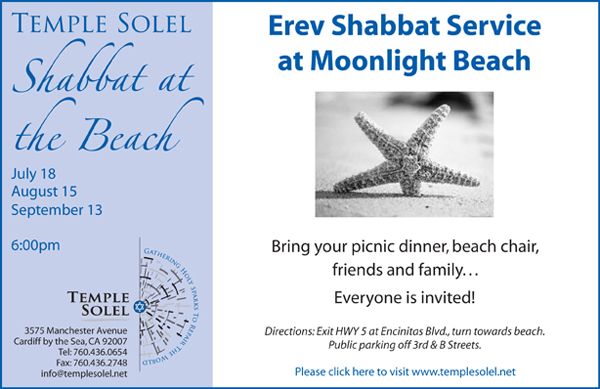

MONDAY, SEPT. 29-THURSDAY, OCT. 9




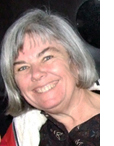 Nancy Harrison Nancy Harrison
cruise & tour specialist
(619) 265-0808

THE JEWISH CITIZEN
The awful revenge of a mediocre artist
By Donald H. Harrison
 Among the misfortunes suffered by the world was that Adolf Hitler considered himself both an artist and an art connoisseur. He tried to be accepted to a prestigious art school, but was turned down. Of course, he blamed the Jews. So when he and his Nazi thugs came to power, among the first things they did was to destroy the works of Jewish artists. But paintings collected by Jewish collectors? That was a whole different matter. Hitler ordered the best of these looted after he sent their owners to ghettos and death camps. His idea was to put these and other art works into a colossal museum he expected to build in the city of Linz, Austria, his childhood home. Among the misfortunes suffered by the world was that Adolf Hitler considered himself both an artist and an art connoisseur. He tried to be accepted to a prestigious art school, but was turned down. Of course, he blamed the Jews. So when he and his Nazi thugs came to power, among the first things they did was to destroy the works of Jewish artists. But paintings collected by Jewish collectors? That was a whole different matter. Hitler ordered the best of these looted after he sent their owners to ghettos and death camps. His idea was to put these and other art works into a colossal museum he expected to build in the city of Linz, Austria, his childhood home.
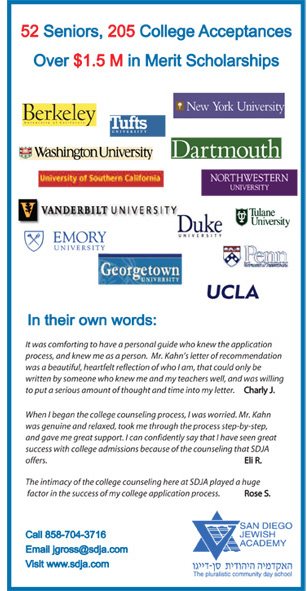 Hermann Goering, a sycophant who was in charge of the German Luftwaffe, also considered himself very knowledgeable in the field of art. So paintings that he considered beneath the notice of the proposed national German museum, Goering kept for himself. He kept adding on gallery after gallery to the country estate where he housed his private collection. The numbers of great paintings and other art works stolen from their rightful owners were in the many tens of thousands. Hermann Goering, a sycophant who was in charge of the German Luftwaffe, also considered himself very knowledgeable in the field of art. So paintings that he considered beneath the notice of the proposed national German museum, Goering kept for himself. He kept adding on gallery after gallery to the country estate where he housed his private collection. The numbers of great paintings and other art works stolen from their rightful owners were in the many tens of thousands.
After watching Nazi troops destroy much of the art work of Poland—except those which had been imported from Germany and other countries deemed racially acceptable—other nations did their best to protect their cultural heritage, even in the face of the advancing Nazi troops.
All the paintings at the Louvre in Paris, for example, were packed up and hidden in chateaus and country estates in the south of France. Likewise, the people of the Hermitage Museum in St. Petersburg, a city that had been renamed as Leningrad by the Russian Communists, struggled valiantly to protect its art treasures during the Nazis 900-day siege of Leningrad.
In battling the Nazis, the Allies occasionally bombed art treasures, although they usually tried to avoid that. One notable exception was the Monte Cassino Monastery, which not only had art treasures within but itself was considered a superior work of architecture. The Allies felt that they had to bomb the monastery to allow pinned down foot soldiers to advance into Italy.
There also was Allied bombing of cities known for their great art works. In Milan, for example, explosives dropped on a building housing Da Vinci’s “The Last Supper.”
Likewise, the railroads going through Florence were bombarded, but with such precision that the city’s major art treasures, including Michelangelo’s famous statue of David, were spared.
In telling of art’s fortunes in war, the documentary makers relied on newsreel footage, still photographs, re-creations, and interviews. Especially informative were the interviews of Lynn H. Nicholas, the historian upon whose book the documentary was based.
When the tide of war changed, and the Nazis started retreating back to Germany, stolen treasures were recovered. In the German heartland, some indigenous German treasures were looted—thus are the reversals of war. But whereas the Soviet Union kept most of the treasures for an extended period of time, the United States Army developed a specialized unit of art experts—known popularly as the Monument Men—whose task it was to track down the missing art, to return it to their owners, and where possible to help repair and restore major pieces.
A significant portion of the documentary traces the work of the Monument Men. But this was a small unit, and the number of art pieces that were stolen or simply appropriated from their original owners were many. Even today, more than 60 years after the end of World War II, thousands of art pieces are unaccounted for—with curators hoping that eventually they will be put up for sale by heirs unfamiliar with the way their families acquired them.
The documentary is important and worthwhile to see for several reasons. It is the product of meticulous research. It adds to the public’s knowledge of the Nazi era. Furthermore, it enables art lovers to see in just one short presentation numerous images of the world’s finest art.


TICO builds reputation as soloist's haven
By Eileen Wingard
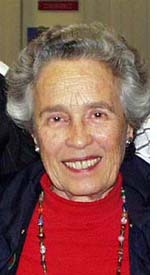 SAN DIEGO—The Tifereth Israel Community Orchestra (TICO) has developed a reputation for featuring outstanding soloists—the most recent examples being performances on April 1 by the SAN DIEGO—The Tifereth Israel Community Orchestra (TICO) has developed a reputation for featuring outstanding soloists—the most recent examples being performances on April 1 by the
brilliant Israeli pianist Ofra Yitzhaki and on June 3 by Tijuana-based Isaac Name.
Yitzhaki gave a virtuoso performance of Chopin’s Piano Concerto No.1, and Namme performed an emotional rendition of Albeniz’ seldom heard Rapsodia Espanola for Piano and Orchestra.
Yitzhaki had performed with the orchestra once before, over a decade ago, and her polished, technically secure performance was no surprise. Namme also played with TICO before, in 1989. He has matured into an impressive artist, under the training of such local teachers as Margarita Valles de Estrada in Tijuana, then Aleck Karis at UCSD and Karen Follingstad at SDSU. From the Rapsodia Espanola’s haunting opening with two harps accompanying the piano, Namme and the orchestra captured the lilt and nuance of the Spanish-flavored themes.
Namme not only performs throughout the Americas, but he is the director of the Escuela de Musica del Noroeste in Tijuana, is a professor of music at the Universidad Autonoma de Baja California in Ensenada, and teaches privately in the San Diego area.
Following the opening Overture to The Happy Slaves, a Rossini- sounding romp written by Spanish composer Juan Crisostomo Arriaga at age 13, the orchestra gave a delightful reading of Manuel De Falla’s Scenes and Dances from The Three Cornered Hat, Part 1. There were admirable solos by the principal flute, clarinet, bassoon, oboe and English Horn. The French Horns also distinguished
themselves.
The final work, Maurice Ravel’s impressionistic Rapsodie Espagnol was the most challenging work. Cadenzas for two clarinets followed by similar cadenzas for two bassoons were well executed. There was suave trumpet playing in the "Habanera." Conductor David Amos, born in Tijuana, has a special flare for Spanish music.
The final concert of the TICO season at 3 p.m., Sunday, July 27, will be the Annual Pops Concert featuring a colorful selection of marches, waltzes, Broadway, film and television music with special arrangements by Shelly Cohen, guest conductor and featuring his New Horizon Singers. The matinee concert is sure to attract a large audience to the air-conditioned Cohen Social Hall of Tifereth Israel Synagogue, so early reservations are suggested: (619) 697-6001.

.

EIGHTEEN
{Editor's Note: In this column, in cooperation with San Diego Jewish Academy, San Diego Jewish World will be republishing works that appeared in Eighteen, a student publication emphasizing creative writing.}
What You See Isn’t Quite What You Get
By Ronit Hakakha
Beauty is truth, truth beauty—that is all
Ye know on earth, and all ye need to know.
- John Keats
NETANYA, Israel—The stillness hit me harder than a tidal wave ever could. It was chilling; not a movement could be seen in any direction on that windless day, save for the sleek tabby padding aimlessly along, pausing only to negotiate the most effortless way through the thick, untended bramble. I, too, was negotiating my path. Wandering through seemingly endless rows of gravestones, looking for that one name, I heard only the crunch of my own feet on the gravel. I can’t be certain as to why, but my parents’ steps behind me were soundless. It seemed normal at the time, as normal and constant as the thickly-bearded guard greeting visitors at the entrance. It seemed as normal as the cracked sink in which I would soon splash my face with near-freezing water, reawakening my awareness of the world around me. Everything seemed as normal as any other visit, and it was. From the cracked tiles, to the timeworn engraving of my grandmother’s name, to the broken hinges on the candleholders, the scene was a technical mess. Not a thing was properly cleaned; no shred of perfection resided in the entire cemetery. But it was beautiful.
The Netanya Cemetery in which my grandmother is buried is perhaps the one place in the world that I find truly beautiful. Despite its lack of cleanliness, its calmness pierces my entire being like nothing else. It is here, in this particular setting, that I can truly agree with Gerard Manley Hopkins: “Glory be to God for dappled things.” By simply visiting this place, I can recognize its faults, and yet these very faults enlighten me; they are the prevailing evidence for my belief that flawlessness lends nothing to beauty. Perception of this type of real beauty is a choice, a choice to see the true nature of things and accept them for what they are in their entirety. It was my choice to regard the dirty old cemetery as a beautiful place, just as it was the choice of the founders of Israel who came before me to see the beauty of that land behind the veil of imperfect topography. It is these choices by which true beauty is discovered, and eventually accepted. Why, then, is the term “beauty” constantly and commonly contorted to be synonymous with the term “perfection”?
It shouldn’t be.
The fact that multiple aspects of this area work together and unite to create a sight that is at once aesthetic and mysterious is calming in itself. In the way that it reassures, a perfect imperfection provides a mental satisfaction, a state of serenity. True awareness and accurate perception of this cemetery lie in understanding that visual acuity is not equivalent to visual clarity; it is possible to know without fully seeing, and thus, comprehension of true beauty, of inner beauty, of pleasure, is achieved.

Become a sponsor of the ‘Adventures’
Would you like to honor a friend's or relative's special simcha such as a birthday, wedding, anniversary, election or special award? Or would you like to memorialize a loved one? Now you can become a sponsor of one day’s edition of “Adventures in San Diego Jewish History” (see today's edition below) by sending a check for $18 to the Harrison Enterprises, publishers of San Diego Jewish World, P.O. Box 19363, San Diego, CA 92159.
Please indicate what date you would like to reserve, and the occasion that you wish to honor or memorialize, and be sure to include your phone number in case we have questions. In the event that more than one person seeks a particular date, we will run all such submissions at the same time. The editor encourages items of interest to the Jewish community, and reserves te right to reject any that might be deemed inappropriate.
These memorializations and honors will be archived along with the rest of "The Adventures in San Diego Jewish History," providing your family and friends with an internet searchable reference.
A separate opportunity to memorialize a loved one is through the Louis Rose Society for the Preservation of Jewish History, the archives of which are posted on this website as a service. For $36, each member of the Louis Rose Society is entitled to memorialize or honor one member of the San Diego Jewish Community. Additional honorees may be honored for $18 per person. Tax-deductible checks for the Louis Rose Society's program may be mailed to the Jewish Community Foundation/ Louis Rose Fund, 4950 Murphy Canyon Road, San Diego, CA 92123.
Please consider honoring someone by sponsoring a daily history edition and by joining the Louis Rose Society. If you have questions about either, please call Don Harrison, San Diego Jewish World editor, at (619) 265-0808, or contact him at editor@sandiegojewishworld.com.
|

ADVENTURES IN SAN DIEGO JEWISH HISTORY
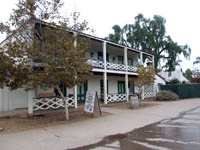
Robinson-Rose House
|
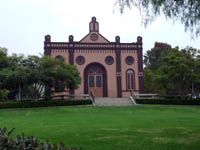
Old Temple Beth Israel |
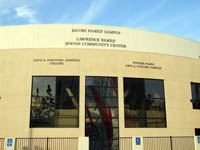
Lawrence Family JCC |
Editor's Note: We are reprinting news articles that appeared in back issues of various San Diego Jewish newspapers. You may access an index of the headlines of those articles by clicking here. You may also use the Google search program on our home page or on the headline index page to search for keywords or names.
Victor Schulman Heads Allocations, Budget Committee
From Southwestern Jewish Press, May 8, 1947, page 1
Eli Levenson, President of the United Jewish Fund, announced the appointment of Victor Schulman as Chairman of the all important Allocations and Budget Committee which will make recommendations for the distribution of money raised in the 1947 United Jewish Fund Campaign.
For the first time in San Diego the committee will consist of both board members and non-board members. Appointed to serve with the chairman are:
Sam Perlmutter, Abe Ratner, Abe Snyder, Jack Dembo, I.L. Domnitz, Abe Nasatir, Rabbi Morton Cohn, Max Rabinowiz, Eve Chenkin, Leo Greenbaum, Frank Winicki, Gertrude Thaler, Sarah Goodrich, Jennie Burnett, Bernice Soule, Julia Neumann, Julia Steinman, Louis Moorsteen, Its Penter, Saul Schissell, Sandor Goldberger. Also, all members of the Executive Committee will serve on the Allocations Committee.
The Campaign goes into its final two weeks with $182,966.50. Max Rabinowitz and Louis Steinman, Chairman of the campaign declared that there was still over $20,000 which had been contributed in 1946 and has not been received as yet in 1947. The chairmen made an urgent appeal asking all who have not as yet contributed, not to wait for the workers to see them but to send their contribution to the office.
Hadassah
From Southwestern Jewish Press, May 8, 1947, page 6
The San Diego Chapter of Hadassah has launched its section of a nationwide campaign “to help mobilize American Jewish women behind the fight for freedom and nationhood for the Jewish people now going on in Europe and in Palestine.”
Members of the San Diego chapter of Hadassah can be proud that they are able to be a part of the wonderful and far reaching work of this national organization. However, our local chapter must grow so that we may go on with the work and enlarge our services in all fields.
A “guest plate” at the Donor’s Luncheon is offered to any member procuring five enrolies (sic) for Hadassah by June 1. The membership drive is off to a good start with the enrolling of six new members last week. Have you signed up that prospective member yet?
Let’s really get behind this effort and put our membership campaign over. The Donor’s Luncheon is scheduled for June 11 at the El Cortez Hotel—come and bring a guest. Earn your “guest plate” by obtaining five new members for Hadassah—you can do it!
Mrs. Lou Steinman of 3025 Curtis St. and Mrs. Gabriel Berg of 4825 Adams Ave, are leaving for Phoenix, Arizona, where they will represent the San Diego Chapter of Hadassah at the Southern Pacific Regional Conference.
Mrs. Ruth Banks, president of the Southern Pacific Region of Hadassah, which includes Southern California, Arizona and part of Texas, will preside as chairman of the conference whose theme will be “The last generation of Jewish servitude. The first generation of Jewish liberation.” Regional board members will preside over the various sessions scheduled for May 12, 13, 14 and 15, at the Hotel Adams in Phoenix.
Four members will participate in a panel discussion on “Since Great Britain has openly come out to liquidate Zionism—what constructive steps now must be taken?” The four topics to be discussed in this political session will be, one, “Palestine today and Haganah,” (Haganah is the organized defense of the Jewish agency); two, “Arousing public opinion in Washington,” three, “Palestine and the United Nations,” and four, “Every Hadassah member’s responsibility,” which will be presented by Mrs. Berg.
Mrs. Steinman will offer a five minute paper on Palestine Supplies. Linens, hospital garments, working and other clothing are dispatched monthly from the Palestine Supplies Bureau of Hadassah which operates from New York City.
Flash! {Hillel}
From Southwestern Jewish Press, May 22, 1947, page 1
With an almost unanimous vote cast at the dinner meeting held at the San Diego Club Tuesday evening, the Jewish students of San Diego State College voted to establish a Hillel Councilorship on their campus. Complete details will appear in the next issue.
Women Raise Record Sum
From Southwestern Jewish Press, May 22, 1947, page 1
Completing the most successful Women’s Division Campaign in the history of the united Jewish Fund in San Diego in which $27,100 was raised from 232 women, Mrs. George Neumann, chairman, and Mrs. Alan Soule, co-chairman, expressed their thanks to all of their workers. The Women’s Division completed its campaign with a dramatic house to house canvas set up by zones led by the following zone captains: Rose Neumann, Jennie Burnett, Rose Weinberger, Rose Lansky, Tully Kitaen, Eleanor Kitaen, Ruth Douglas, Sylvia Haffner, Elizabeth Weiss, Betty Horowitz, Anna Lee, Lee Douglas, Rosalie Dembo, Esther Schwartz, Frances Berenson, Dora Eber.
The Nation United Jewish Appeal Women’s division Magazine gave recognition to the san Diego Women’s Division by publishing a picture of its chairmen and expressing its appreciation for the work done.
Louis Steinman and Max Rabinowitz, co-chairmen of the 1947 drive, declared that there still were many prospects to be seen. $193,978 has been raised to date from 1,544 contributors. The campaign will continue until all prospects have been solicited.
{Return to top}


SAN DIEGO JEWISH WORLD THE WEEK IN REVIEW
Middle East
How Sha'ar Hanegev elementary school protects Israeli kids from the rockets by Ulla Hadar in Kibbutz Ruhama, Israel
Possible attack on Iran, negotiating for hostages prompt many ethical questions by Ira Sharkansky in Jerusalem
Israel is now appeasing its Arab enemies by Shoshana Bryen in Washington, D.C.
San Diego
Jewish-Catholic dialogue focuses on the crucifixion and on the Holocaust by Donald H. Harrison in Cardiff-by-the-Sea, California
Adventures in San Diego Jewish History
Become a sponsor of our ‘Adventures’
—April 24, 1947: Lasker Lodge B.B. {Hillel}
—April 24, 1947: Jewish Labor Com
—April 24, 1947: Birdie Stodel B.B.
—April 24, 1947: Variety Show Saturday Nite
The Arts
My Old Friends a joyful romp of the aged by Cynthia Citron in Burbank, California
A Jewish dancer’s road to freedom by Sheila Orysiek in San Diego
)Middle East
Murtha owes Marines an apology by Shoshana Bryen in Washington, D.C.
Judaism
Conservative movement insists kosher processors treat employees humanely by Rabbi Leonard Rosenthal in San Diego
The importance of a Hebrew name by Rabbi Baruch Lederman in San Diego
San Diego
Garden and square memorialize two favorite professors at San Diego City College by Donald H. Harrison in San Diego
Adventures in San Diego Jewish History
—April 24, 1947: 'And A Little Child Shall Lead Them'
—April 24, 1947: Beth Jacob Congregation
—April 24, 1947: S.O.S. Still Needs Your Support
—April 24, 1947: S.D. To Have Summer Camps
The Arts
S.D. weighs festival of new Jewish plays by Carol Davis in San Diego
Middle East
Costs, benefits to Hamas regularization by Eran Lerman in Jerusalem
Wars among the Jews heat up in Israel by Ira Sharkansky in Jerusalem
U.S. and Israel prefer stability among Arab nations rather than real democracy by Shoshana Bryen in Washington, D.C.
San Diego
UJF backs programs to transport local seniors, build school in Sha'ar Hanegev by Donald H. Harrison in San Diego
Jackie Gmach receives Marla Bennett Humanitarian Award from AFMDA by Yvonne Greenberg and Paul Greenberg in La Jolla, California
Adventures in San Diego Jewish History
—April 10, 1947: Organizations 'working with' UJF
—April 10, 1947: USO-JWB Activities
—April 24, 1947: San Diego Sends $50,000 From Emergency Fund To Aid European Jews
The Arts
Chapter Thirteen of Reluctant Martyr, a serialized novel by Sheila Orysiek of San Diego
)Middle East
Skepticism over Israel-Hamas ceasefire by Ira Sharkansky in Jerusalem
Canada
Jews and Canada's First Nations have much to learn from each other's experiences by Rabbi Dow Marmur in Toronto
Adventures in San Diego Jewish History
—April 10, 1947: Prof. Sheldon Warns of Bundist revival
—April 10, 1947: We Were There by Albert Hutler
—April 10, 1947: Eminent Speakers to Appear in San Diego This Week
The Arts
Thursdays with the music of Hal Wingard
—#14 The Dog, The Cat And Me
—#153 Have You Hugged Your Cat Lately?
—#278 Boasting
Lifestyles
Have you ever tried making 'old' friends? by Donald H. Harrison in San Diego
Middle East
Hamas will rebuild during the ceasefire by Shoshana Bryen in Washington D.C.
San Diego County
Russert's death prompts walking regimen by Donald H. Harrison in El Cajon, California
San Diego Jewish Trivia: Journalists by Evelyn Kooperman
Adventures in San Diego Jewish History
—March 20, 1947: UJF Youth Division Organizes
—March 20, 1947: Sergeant Inspires Youth Division
—March 20, 1947:‘Personality’ Talk Impresses TYL
Arts
—L'il Noodle, a kid who'll steal your heart by Cynthia Citron in Los Angeles
United States of America
Jews are Obama’s base, not his problem by J. Zel Lurie in Delray Beach, Florida
San Diego
Orthodoxy and sports juxtaposed at gala by Donald H. Harrison in San Diego
Obituary: Isadore Horne, Holocaust survivor, 92 by Donald H. Harrison in San Diego
The Arts
The Jewish history of the Incredible Hulk by Rabbi Simcha Weinstein in New York
Adventures in San Diego Jewish History
—March 20, 1947: Pioneer Women
—March 20, 1947:Appeal for Seder Home Hospitality for Servicemen
—March 20, 1947:B’nai B’rith Presents Wheel Chairs to Hospital
—March 20, 1947:Carl Esenoff to Head Jewish Welfare Society
Link to previous editions
< BACK TO TOP
|
|
